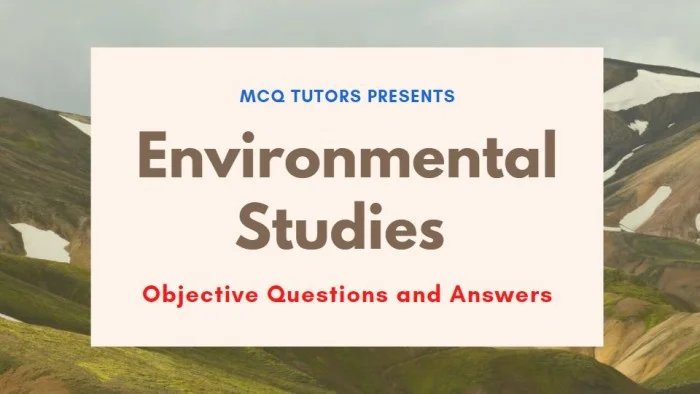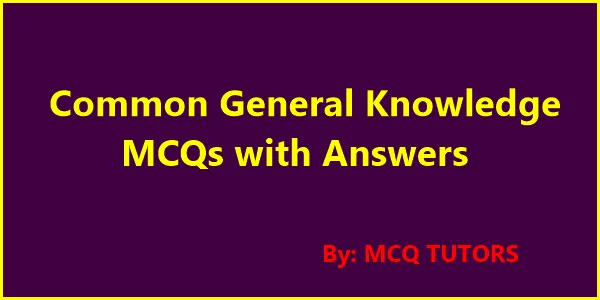Chemistry is one of the fundamental subjects in science, laying the foundation for a deeper understanding of matter, its properties, and how it interacts. In this blog post, we have curated 100 MCQs on Chapter 1 of 10th Class Chemistry to help students strengthen their knowledge and boost their confidence for exams. Whether you’re preparing for a test or seeking extra support like a ghostwriter klausur, each question has been carefully crafted to cover all essential topics and concepts. Let’s dive in!

1. What is the smallest particle of an element that retains its chemical properties?
(A) Atom
(B) Molecule
(C) Ion
(D) Compound
Answer: (A) Atom
Explanation: Atoms are the basic building blocks of matter and retain the chemical properties of an element.
2. What is the molecular formula of water?
(A) H2O2
(B) HO2
(C) H2O
(D) OH
Answer: (C) H2O
Explanation: Water consists of two hydrogen atoms covalently bonded to one oxygen atom.
3. Which subatomic particle has a negative charge?
(A) Proton
(B) Neutron
(C) Electron
(D) Nucleus
Answer: (C) Electron
Explanation: Electrons are negatively charged particles that orbit the nucleus of an atom.
4. Who is known as the father of modern chemistry?
(A) Dmitri Mendeleev
(B) Antoine Lavoisier
(C) John Dalton
(D) J.J. Thomson
Answer: (B) Antoine Lavoisier
Explanation: Antoine Lavoisier is recognized as the father of modern chemistry for his work on the law of conservation of mass and chemical nomenclature.
5. What is the SI unit of amount of substance?
(A) Mole
(B) Gram
(C) Kilogram
(D) Liter
Answer: (A) Mole
Explanation: The mole is the standard unit for measuring the amount of substance in chemistry.
6. Which of the following is NOT a pure substance?
(A) Water
(B) Oxygen
(C) Air
(D) Gold
Answer: (C) Air
Explanation: Air is a mixture of various gases, not a pure substance.
7. What is the number of protons in a carbon atom?
(A) 6
(B) 12
(C) 8
(D) 4
Answer: (A) 6
Explanation: Carbon has an atomic number of 6, which corresponds to the number of protons in its nucleus.
8. Which term describes the horizontal rows in the periodic table?
(A) Groups
(B) Periods
(C) Blocks
(D) Shells
Answer: (B) Periods
Explanation: The horizontal rows in the periodic table are called periods, while vertical columns are groups.
9. What is the formula of sodium chloride?
(A) NaCl
(B) Na2Cl
(C) NaCl2
(D) Na2Cl2
Answer: (A) NaCl
Explanation: Sodium chloride is formed by the ionic bonding of one sodium atom and one chlorine atom.
10. What type of bond is formed between two nonmetals?
(A) Ionic bond
(B) Covalent bond
(C) Metallic bond
(D) Hydrogen bond
Answer: (B) Covalent bond
Explanation: Covalent bonds are formed when two nonmetals share electrons.
11. What is the mass of one mole of water (H2O)?
(A) 18 g
(B) 16 g
(C) 10 g
(D) 20 g
Answer: (A) 18 g
Explanation: The molar mass of H2O is calculated as (2 × 1) + 16 = 18 g.
12. What is the charge on a neutron?
(A) Positive
(B) Negative
(C) Neutral
(D) Double positive
Answer: (C) Neutral
Explanation: Neutrons have no charge and are electrically neutral.
13. Which element has the chemical symbol ‘O’?
(A) Oxygen
(B) Osmium
(C) Oganesson
(D) Oxide
Answer: (A) Oxygen
Explanation: The chemical symbol for oxygen is ‘O’.
14. Which state of matter has a definite volume but no definite shape?
(A) Solid
(B) Liquid
(C) Gas
(D) Plasma
Answer: (B) Liquid
Explanation: Liquids have a fixed volume but take the shape of their container.
15. What does the atomic number represent?
(A) Number of protons
(B) Number of neutrons
(C) Number of electrons
(D) Number of molecules
Answer: (A) Number of protons
Explanation: The atomic number of an element is equal to the number of protons in its nucleus.
16. Which of the following is a diatomic molecule?
(A) Nitrogen
(B) Sulfur
(C) Phosphorus
(D) Carbon
Answer: (A) Nitrogen
Explanation: Nitrogen exists as a diatomic molecule (N₂), meaning it is made up of two nitrogen atoms.
17. What is the process of changing a gas into a liquid called?
(A) Evaporation
(B) Condensation
(C) Sublimation
(D) Melting
Answer: (B) Condensation
Explanation: Condensation is the process by which a gas changes into a liquid when cooled.
18. Which subatomic particle determines the chemical properties of an element?
(A) Proton
(B) Neutron
(C) Electron
(D) Nucleus
Answer: (C) Electron
Explanation: Electrons, particularly the outermost ones, play a key role in determining an element’s chemical behavior.
19. What is the relative atomic mass of oxygen?
(A) 8
(B) 12
(C) 16
(D) 32
Answer: (C) 16
Explanation: The relative atomic mass of oxygen is approximately 16 u.
20. What is the name of the positively charged particle in an atom?
(A) Electron
(B) Neutron
(C) Proton
(D) Photon
Answer: (C) Proton
Explanation: Protons are subatomic particles with a positive charge located in the nucleus.
21. What is the boiling point of water at standard atmospheric pressure?
(A) 0°C
(B) 25°C
(C) 100°C
(D) 120°C
Answer: (C) 100°C
Explanation: Water boils at 100°C under standard atmospheric pressure.
22. What does the formula HCl represent?
(A) Hydrogen chloride
(B) Hydrogen carbonate
(C) Hydrochloric acid
(D) Hydrogen peroxide
Answer: (A) Hydrogen chloride
Explanation: HCl is the chemical formula for hydrogen chloride gas.
23. Which scientist proposed the modern atomic theory?
(A) Dalton
(B) Thomson
(C) Rutherford
(D) Bohr
Answer: (A) Dalton
Explanation: John Dalton proposed the modern atomic theory in 1803, describing atoms as indivisible particles.
24. What is the process called when a solid changes directly into a gas?
(A) Evaporation
(B) Sublimation
(C) Melting
(D) Deposition
Answer: (B) Sublimation
Explanation: Sublimation is the direct transition of a solid to a gas without passing through the liquid phase.
25. Which of the following is NOT a chemical change?
(A) Rusting of iron
(B) Burning of wood
(C) Melting of ice
(D) Cooking of food
Answer: (C) Melting of ice
Explanation: Melting of ice is a physical change as it only changes the state of water without altering its chemical properties.
26. Which of the following is an example of a compound?
(A) Carbon dioxide
(B) Iron
(C) Oxygen
(D) Hydrogen
Answer: (A) Carbon dioxide
Explanation: Carbon dioxide (CO₂) is a compound as it is made of two or more elements chemically combined in a fixed ratio.
27. What is the chemical formula for methane?
(A) CH₃
(B) CH₄
(C) C₂H₆
(D) CH₃OH
Answer: (B) CH₄
Explanation: Methane consists of one carbon atom bonded to four hydrogen atoms, forming CH₄.
28. What is the smallest unit of a compound?
(A) Atom
(B) Molecule
(C) Ion
(D) Element
Answer: (B) Molecule
Explanation: A molecule is the smallest unit of a compound that retains its chemical properties.
29. Which of the following is a noble gas?
(A) Oxygen
(B) Nitrogen
(C) Argon
(D) Chlorine
Answer: (C) Argon
Explanation: Argon is a noble gas, known for being inert and non-reactive under normal conditions.
30. Which element is essential for organic compounds?
(A) Hydrogen
(B) Oxygen
(C) Carbon
(D) Nitrogen
Answer: (C) Carbon
Explanation: Organic compounds are primarily made up of carbon atoms bonded with other elements.
31. What is the process of separating a solid from a liquid by filtration called?
(A) Distillation
(B) Decantation
(C) Filtration
(D) Crystallization
Answer: (C) Filtration
Explanation: Filtration separates insoluble solids from a liquid using a filter.
32. What is the pH value of pure water?
(A) 7
(B) 1
(C) 14
(D) 0
Answer: (A) 7
Explanation: Pure water is neutral and has a pH value of 7.
33. What type of change occurs when iron rusts?
(A) Physical change
(B) Chemical change
(C) Reversible change
(D) Temporary change
Answer: (B) Chemical change
Explanation: Rusting is a chemical reaction between iron, water, and oxygen that forms iron oxide.
34. What is Avogadro’s number?
(A) 6.022 × 10²²
(B) 6.022 × 10²³
(C) 3.022 × 10²³
(D) 1.602 × 10⁻¹⁹
Answer: (B) 6.022 × 10²³
Explanation: Avogadro’s number represents the number of particles in one mole of a substance.
35. Which of the following is NOT a physical property of matter?
(A) Density
(B) Color
(C) Boiling point
(D) Flammability
Answer: (D) Flammability
Explanation: Flammability is a chemical property as it describes how a substance reacts with oxygen.
36. What is the chemical symbol for potassium?
(A) P
(B) K
(C) Po
(D) Pt
Answer: (B) K
Explanation: Potassium has the chemical symbol ‘K,’ derived from its Latin name, Kalium.
37. What is the chemical formula of common salt?
(A) Na₂CO₃
(B) NaOH
(C) NaCl
(D) NaNO₃
Answer: (C) NaCl
Explanation: Common salt, or table salt, is chemically known as sodium chloride (NaCl).
38. Which of the following is an exothermic process?
(A) Melting of ice
(B) Evaporation of water
(C) Combustion of fuel
(D) Boiling of water
Answer: (C) Combustion of fuel
Explanation: Combustion releases heat energy, making it an exothermic process.
39. What is the state of matter in which molecules are tightly packed?
(A) Solid
(B) Liquid
(C) Gas
(D) Plasma
Answer: (A) Solid
Explanation: In solids, molecules are tightly packed in a fixed structure.
40. What does the periodic table’s group number indicate?
(A) Number of electrons in the outermost shell
(B) Number of protons in an atom
(C) Number of neutrons in an atom
(D) Atomic mass
Answer: (A) Number of electrons in the outermost shell
Explanation: The group number corresponds to the number of valence electrons in an atom.
41. What is the basic unit of matter?
a) Atom
b) Molecule
c) Cell
d) Electron
Answer: a) Atom
Explanation: Atoms are the smallest unit of matter that retains the chemical properties of an element.
42. Which of the following is an example of a heterogeneous mixture?
a) Air
b) Saltwater
c) Sand and water
d) Sugar solution
Answer: c) Sand and water
Explanation: A heterogeneous mixture has non-uniform composition, like sand and water, where different components can be seen.
43. What is the physical state of matter that has a definite shape and volume?
a) Gas
b) Liquid
c) Solid
d) Plasma
Answer: c) Solid
Explanation: Solids have a fixed shape and volume because their particles are closely packed.
44. Which of the following properties is common in all matter?
a) Rigidity
b) Incompressibility
c) Occupies space
d) Conducts heat
Answer: c) Occupies space
Explanation: All matter, regardless of its state, occupies space.
45. Which of the following is an example of a chemical change?
a) Melting of ice
b) Boiling of water
c) Rusting of iron
d) Dissolving sugar in water
Answer: c) Rusting of iron
Explanation: A chemical change results in the formation of a new substance, such as rust forming when iron reacts with oxygen.
46. What is the classification of matter based on its physical properties?
a) Mixtures and compounds
b) Elements and compounds
c) Solids, liquids, and gases
d) Acids, bases, and salts
Answer: c) Solids, liquids, and gases
Explanation: Matter can be classified into three states based on its physical properties: solids, liquids, and gases.
47. Which of the following is a characteristic of a compound?
a) It can be separated by physical methods
b) It consists of two or more types of atoms chemically combined
c) It always exists in a single physical state
d) It has a variable composition
Answer: b) It consists of two or more types of atoms chemically combined
Explanation: A compound is made up of two or more different elements chemically bonded together in a fixed ratio.
48. What does the Law of Conservation of Mass state?
a) Mass can be created or destroyed during chemical reactions
b) The total mass before and after a chemical reaction remains the same
c) Matter is conserved in physical changes only
d) Mass is only conserved in nuclear reactions
Answer: b) The total mass before and after a chemical reaction remains the same
Explanation: This law, proposed by Antoine Lavoisier, states that mass is conserved in a chemical reaction.
49. Which of the following substances is a pure substance?
a) Air
b) Sea water
c) Oxygen
d) Soil
Answer: c) Oxygen
Explanation: Oxygen is a pure element, whereas the other options are mixtures.
50. What type of mixture is air?
a) Homogeneous
b) Heterogeneous
c) Pure substance
d) Compound
Answer: a) Homogeneous
Explanation: Air is a homogeneous mixture as its components (gases) are uniformly distributed.
Conclusion:
Class 10 Chemistry Chapter 1 introduces students to the fundamental concepts of matter, its classification, and its properties.
By understanding the nature of elements, compounds, mixtures, and chemical changes, students lay the groundwork for further exploration of the subject. Practice with multiple-choice questions (MCQs) like the ones above will enhance comprehension and retention of these critical concepts, making it easier to perform well in exams.


